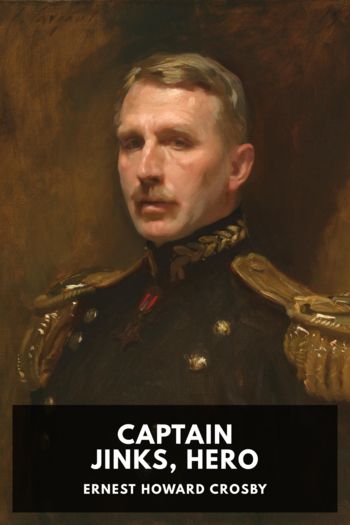What Doesn't Kill Us--A McKenzie Novel, David Housewright [best young adult book series .txt] 📗

- Author: David Housewright
Book online «What Doesn't Kill Us--A McKenzie Novel, David Housewright [best young adult book series .txt] 📗». Author David Housewright
“Porter called almost immediately to tell me about it,” Charles said. “When you reach my position, any good news no matter how iffy—what did Emily Dickinson write? ‘Hope’ is the thing with feathers that perches in the soul…”
“Then McKenzie was shot,” Porter said.
Jenna turned and silently left the room. Porter called to her.
“Jenna?”
“I need to go home to St. Paul, take care of some things,” she said. “I’ll be back later.”
Her brothers watched her go.
“I worry about her,” Charles said.
The third of the four phone numbers on the FSU’s list confounded Detective Shipman, but like I said, she was a substandard investigator and prone to confusion. Okay, maybe she wasn’t as bad as all that. Bobby liked her and his judgment was usually pretty sound. I say ‘usually’ because I remember this one time when he decided it was a good idea to go down the slides at the Longfellow Elementary School while standing up. It’s the reason I have a chip in my front tooth. Anyway, the phone number confused Shipman. Instead of calling it, she decided to visit the owner, the Transplant Care Department of M Health Fairview Clinics and Surgery Center in Minneapolis, the M standing for the University of Minnesota.
According to the website, University of Minnesota Health had one of the oldest and most successful transplant programs in the world. It could boast of more than fifty years of experience in the clinical care of more than 12,000 heart, lung, kidney, liver, pancreas, islet, and intestine transplant recipients as well as 4,600-plus living organ donors. It was also consistently ranked as a top provider by national and local publications. Which is why Shipman was disappointed when she walked into suite 300 on the third floor of the building located on the east bank of the university campus. She had expected something grand. Instead, she told me that it reminded her of the waiting room of her dentist’s office.
She approached the woman sitting at the reception desk and flashed her credentials.
“Yes, Detective?” The receptionist spoke without fluster or surprise as if being confronted by a plainclothes police officer happened to her at least twice a week.
“You received a phone call early Tuesday evening…”
“Yes.”
“From a man named Rushmore McKenzie.”
“Yes.”
“Whom did he speak to?”
The receptionist stared as if Shipman had spoken in a foreign language that she now needed to translate. After a few moments’ pause, she turned in her chair and spoke to no one in particular.
“Who was on the phones Tuesday night?”
A voice answered her.
“Lisa.”
The receptionist spun back to face Shipman.
“Lisa Kohl might be able to help you. She’s not in. Won’t be until…” The receptionist glanced at the clock on the wall. “Not until after lunch, anyway.”
“You don’t keep a log?” Shipman said.
“Of everyone who calls and when they call? Why would we do that?”
Because it would make my life so much easier, Shipman thought but didn’t say.
“Lisa might remember this Rushmore McKenzie,” the receptionist said. “I can’t help you.”
A woman had appeared behind the reception desk during the conversation. She was reading from a clipboard but her head had come up at the sound of my name.
“What about Rushmore McKenzie?” she said.
“Do you know him?” Shipman asked.
“I wouldn’t say I know him. I spoke with him Tuesday. I remember because of the name. Rushmore.”
“Did he tell you where it came from?” Shipman asked. “His name?”
“No.”
“Lucky you.”
Shipman flashed her credentials again and asked if she could speak to her.
“Sure,” she said, another woman who wasn’t intimidated by Shipman’s badge. “I’m Sara Barsness.”
“May I ask what you do here?” Shipman said.
“I’m a transplant coordinator.”
Shipman sat across from Barsness in her small office.
“Why did McKenzie call you?” she asked.
“He didn’t call me specifically. He called the department and his call was transferred to me.”
“What did he want?”
“He wanted information about liver transplants.”
“For himself?”
“Could have been for himself,” Barsness said. “Or a family member. Friend. He kept using masculine pronouns, he, his, so I concluded that he was speaking about a man, other than that…”
“He didn’t give a name?”
“No.”
“You didn’t ask?”
“No.”
“What did you tell him?”
“General information.”
“Such as?” Shipman asked.
“Such as nationally, nearly 17,000 individuals wait for liver transplantation each year, while only 6,700 deceased-donor organs, those coming from brain-dead donors, become available and many of them are rejected, meaning that the survival rate is not—it’s not what we would like. I told him that a positive outcome is much more likely to be achieved for transplants involving live donors, but convincing someone to donate a portion of their own liver to someone they don’t know is daunting at best. The vast majority of live donors are family members or extremely close friends. Strangers donating to strangers is extremely rare, only about two hundred a year.”
“What did he say to that?”
“He asked what it took to become a live donor and I told him that matching livers with recipients is based on age, blood type, organ size, and other factors.”
Shipman flashed on one of my notes—the one where Emma King asked about my blood type.
“What about A-negative blood?” she asked.
“Patients with type A blood can receive a liver transplant from someone else with type A blood or from someone who has type O, the universal donor. However, a donor who has type A blood can only donate to someone else with type A or type AB blood. The rhesus, the Rh factor in blood, positive or negative, is not relevant.”
“Is it better that a family member donates as opposed to a friend or stranger?”
“McKenzie asked the same question. It’s better but not by a great deal. It does help with tissue matching. Other than that—we’re also concerned that the donor’s body mass index is thirty-two or less, that his liver, kidneys, and thyroid are healthy, that he hasn’t been exposed to transmittable viruses such as hepatitis, HIV, and COVID-19. Also, we want the donor and recipient to be close in age and roughly the same size physically. What





Comments (0)